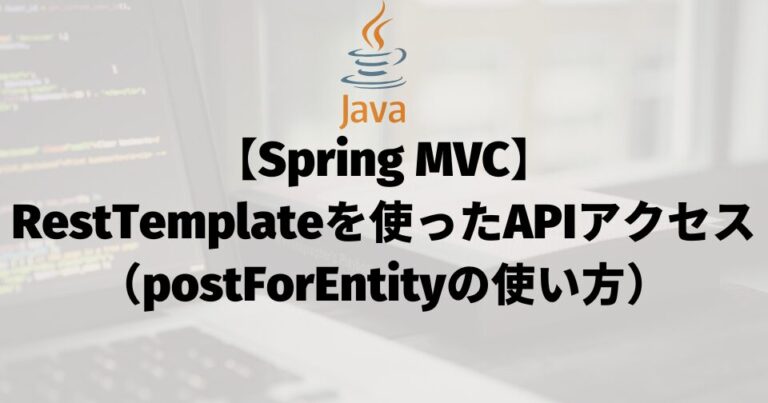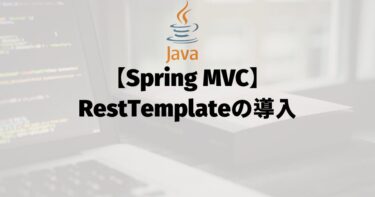概要
RestTemplate#postForEntityメソッドの基本的な使用方法についてまとめた。
動作確認を行うための事前準備については、以下に記載している。
概要 RESTfulなAPIを呼ぶクライアントライブラリである、RestTemplateの概要についてまとめた。 RestTemplateを使用するための準備と、どんなメソッドがあるのかを紹介している。 前提 今[…]
基本的な使い方
RestTemplate#postForEntityメソッドは、指定したURIにPOST通信を行ってリクエストボディを送信し、HTTPステータス/ヘッダー/ボディを含むResponseEntityオブジェクトを取得する。
実装方法
RestTemplate#postForEntityメソッドは、基本的に以下のように実装する。
戻り値は指定したレスポンスの型をボディにもつResponseEntityとなる。
使用例
APIアクセスクラスにpostForEntityメソッドを追加し、動作確認を行う。
APIアクセスクラス
postForEntityを使用したメソッドを追加する。
RestClient.java
package com.example.client_prototype.biz;
import java.net.URI;
import org.springframework.beans.factory.annotation.Autowired;
import org.springframework.http.ResponseEntity;
import org.springframework.stereotype.Component;
import org.springframework.web.client.RestTemplate;
@Component
public class RestClient {
@Autowired
private RestTemplate restTemplate;
/**
* postForEntityの利用
* @param uri
* @param requestBody
* @param responseType
* @return
*/
public <T> ResponseEntity<T> postForEntity(URI uri, Object requestBody, Class<T> responseType) {
return restTemplate.postForEntity(uri, requestBody, responseType);
}
}
引数にURI、リクエストボディ、取得したいレスポンスの型を指定している。
動作確認
戻り値を指定して動作確認を行う。
動作確認用クラス
package com.example.client_prototype.executor;
import java.net.URI;
import java.time.LocalDate;
import org.springframework.context.support.ClassPathXmlApplicationContext;
import org.springframework.http.ResponseEntity;
import org.springframework.web.util.UriComponentsBuilder;
import com.example.client_prototype.biz.RestClient;
import com.example.rest_client_prototype.resources.Resource;
public class Main {
public static void main(String[] args) {
try (var context = new ClassPathXmlApplicationContext("/META-INF/spring/applicationContext.xml")) {
// DIコンテナから取得
var restClient = context.getBean(RestClient.class);
// URI定義
URI uri = UriComponentsBuilder
.fromUriString("http://localhost:8080/rest_prototype/rest02/create")
.build()
.toUri();
// リクエストボディ
var req = new Resource("4", "パスタ", LocalDate.of(2022, 5, 1));
// 動作確認
ResponseEntity<Void> res = restClient.postForEntity(uri, req, Void.class);
System.out.println(res.getStatusCode()); // 200 OK
System.out.println(res.getHeaders()); // [Content-Length:"0", Date:"Thu, 20 Mar 2025 00:08:10 GMT", Keep-Alive:"timeout=20", Connection:"keep-alive"]
System.out.println(res.getBody()); // null
}
}
}
上記のようにVoid.classを指定すると、レスポンスボディは取得せずヘッダーとステータスコードを保持するResponseEntityを取得する。
まとめ
☑ postForEntityを使用することで、POSTリクエストを送信してResponseEntityを取得することができる
☑ レスポンスボディは任意の型を指定できる(Void.classを指定することで、ボディは無視できる)
☑ ResponseEntityで取得することで、HTTPステータス/ヘッダー/ボディなどの情報を参照できる

